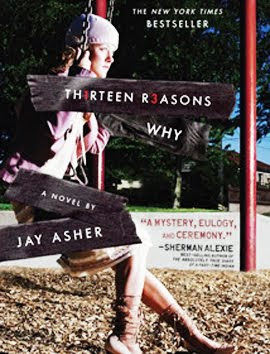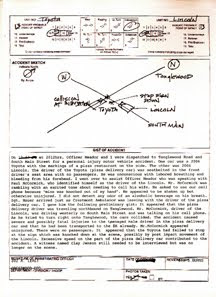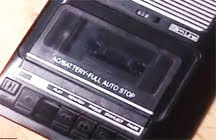 With the long-awaited release of a paperback edition and a film in the works by Universal Studios for 2013 (with Selena Gomez cast as Hannah Baker), Thirteen Reasons Why (a.k.a. Th1rteen R3asons Why) has been enjoying a resurgence and rediscovery among those who discovered it four years ago. Good.
With the long-awaited release of a paperback edition and a film in the works by Universal Studios for 2013 (with Selena Gomez cast as Hannah Baker), Thirteen Reasons Why (a.k.a. Th1rteen R3asons Why) has been enjoying a resurgence and rediscovery among those who discovered it four years ago. Good.
The book, written by Jay Asher, is powerful. Even among those who hate the book, Thirteen Reasons Why leaves an imprint.
The love (and hate) for it is what makes it art, a daring and unconventional approach to story telling that sounds even better and more haunting as an audiobook, adding clarity to exactly how Baker might have told her story.
The book, like it describes poetry, contains puzzles within puzzles.
As a conversation starter, few books leave as much room open to be dissected, discussed, deconstructed, and applied to any number of messages that may or may not be found inside. Some people have given it an assignment to be about suicide, bullying, acceptance, trust, rumors, reputation, and any number of other topics that people bring with them.
Sure, there is wiggle room to discuss any of those topics as they relate to the book. But, to make the book about any of these things, people bring much more into it than what exists on the page. As literature, the root of the story is much simpler.
 Asher himself has shared its meaning on several occasions. And, in his own voice, points to a single line or two by his character Hannah Baker: "No one knows for certain how much of an impact they have on the lives of other people. Often we have no clue."
Asher himself has shared its meaning on several occasions. And, in his own voice, points to a single line or two by his character Hannah Baker: "No one knows for certain how much of an impact they have on the lives of other people. Often we have no clue."
This is important consideration, especially as it relates to discussions among early teens who read it. Because when its message is cast for any other purpose, it becomes misaligned.
Specifically, as a book about bullying, most wounds lack intensity. As a book about suicide, the reasons seem thin. As a book about acceptance, no one is truly shut out. And yet, Asher weaves together a story that can profoundly impact whatever characters someone might relate to, causing them to think about or even rethink their daily actions. Sometimes, even the smallest of them have consequences.
The intriguing and sometimes illuminating story of Thirteen Reasons Why.
On the surface, the premise is interesting if not straightforward. Baker commits suicide, but not before recording a series of cassette tapes that explain the course of events that led up to her decision. Her instructions for the recipients of theses tapes are specific.
 If you receive them, she expects, listen to them and discover the role you played, and then pass them along to the next person. If you don't listen to them or pass them along, a second set of cassettes will be released, incriminating everyone who she names, punishing them with public shame, embarrassment, or even criminal charges.
If you receive them, she expects, listen to them and discover the role you played, and then pass them along to the next person. If you don't listen to them or pass them along, a second set of cassettes will be released, incriminating everyone who she names, punishing them with public shame, embarrassment, or even criminal charges.
The principal action of the story is played out by protagonist Clay Jensen. He's a shy, bright, and likable California high school student who is surprised to discover a shoebox containing seven cassette tapes on his front doorstep. He then learns that he is one of the people on the list, even though he has no idea how or why she would have included him.
It's his tension, the anguish in not knowing how he fits within the context of her death, that immediately hooks the reader and drives the story forward. In addition to helping fill in Baker's story with insights and his insecurities, he provides the action as he visits various locations that she has marked out to give her story a physical presence — places like the park where she had her first kiss or the party that may have pushed her over the edge.
Her story, as well as the revelations made by Jensen, is more believable and intriguing as long as readers keep tragedy in check. As a character, Baker has nothing to learn and, even though she tells a story so that others may appreciate how the smallest of actions can carry consequences, she doesn't apply her own lesson before taking her life. She has little regard for how the tapes might impact the various people in them; some deservedly so and others questionably so.
 It's partly what makes the story both memorable and believable. Asher presents a character that is neither asking for forgiveness nor can be judged as her fate is sealed in the first few pages. She is already dead. And just as suicide is sometimes likened to selfishness so are the tapes she made to explain why she did it. For worse, not better.
It's partly what makes the story both memorable and believable. Asher presents a character that is neither asking for forgiveness nor can be judged as her fate is sealed in the first few pages. She is already dead. And just as suicide is sometimes likened to selfishness so are the tapes she made to explain why she did it. For worse, not better.
In accepting this, the true protagonist of the story shines. Although two stories are being told at the same time, it is Jensen's story and what he might learn, feel, or react to that makes people pay attention.
Author Jay Asher worked at dozens of places before becoming an author, including as a shoe salesman and in libraries and bookstores. He originally thought of writing a book told by a character on a cassette after taking an audio tour. Originally, Baker was the protagonist until he discovered more about Jensen while writing the story.
Thirteen Reasons Why By Jay Asher Swings At 9.8 On The Liquid Hip Richter Scale.
As a story is both beautiful and repelling, poignant in its ability to touch human emotion. It's even more powerful as an audiobook, because then the story plays out not on the printed page but exactly as it might have for Jensen.
Based on some reviews, the audio might even provide a more structured read, less confusing because Asher does switch back and forth between Baker and Jensen, sometimes as frequently as every few lines. In the audio version, what might not read as well in print makes perfect sense with alternating male and female voices.
Thirteen Reasons Why by Jay Asher is available on Amazon and you can find the book at Barnes & Noble. Thirteen Reasons Why is also on iBooks, but it's the audiobook that is even more striking. Read by Debra Wiseman and Joel Johnstone, the six-and-a-half hour story is hard to put aside, much like it was nearly impossible for Clay Jensen to put the tapes aside when he first received them. Highly recommended, even if you've read it.
![Liquid [Hip]](https://blogger.googleusercontent.com/img/b/R29vZ2xl/AVvXsEjAFBQPqS7J0-rrttNoRYSsuwIePPZf4Nq6sqDioK1zzVQXJIQXKzq_NVNI4n6h3inuRQFBKOcJeZeSufkdHHIOxbSWyBjTjTxgKEQGyPzdwvkEEeECh4bI5YEGk4RWGUINSd7vulPQsCA/s1600-r/liquidhip.jpg)